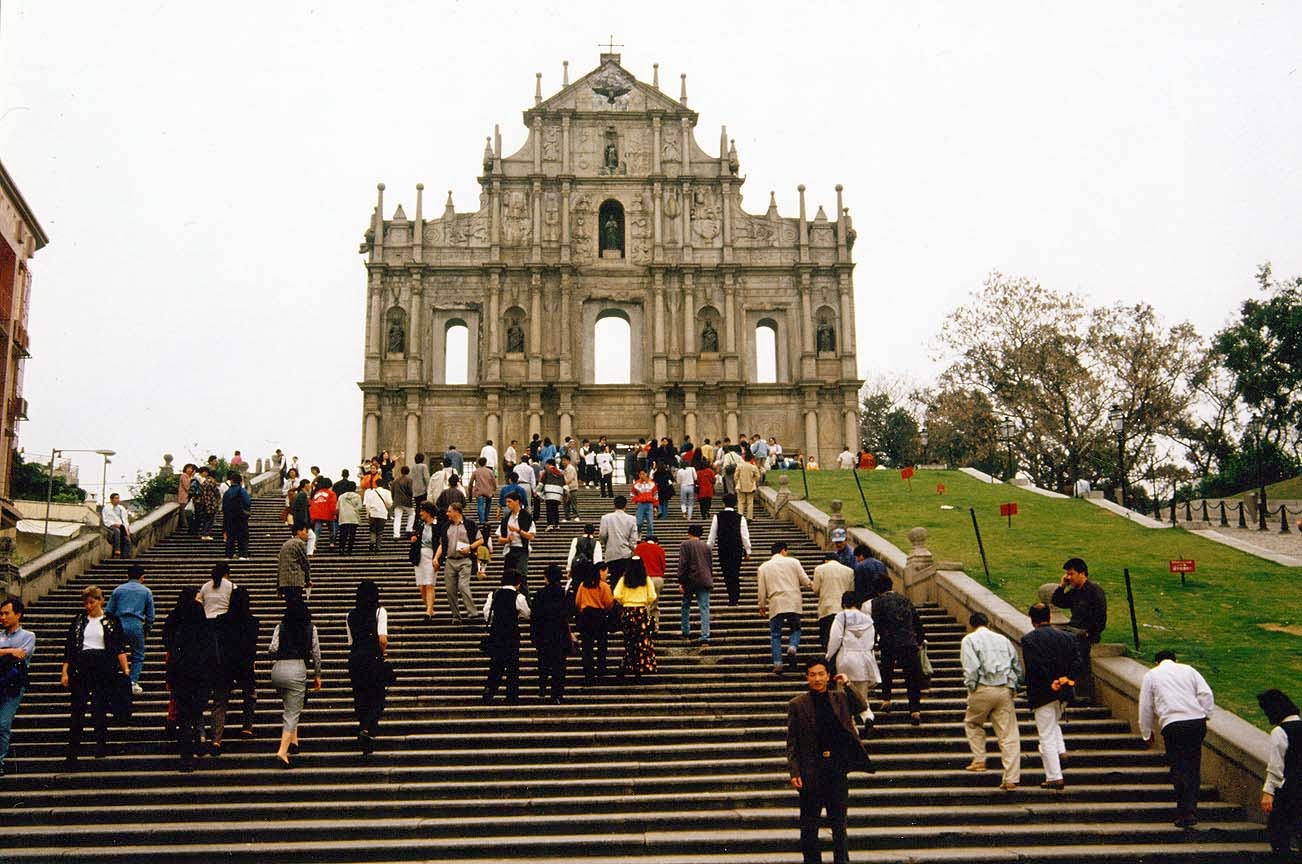The Association of the Eight Panoramas of Macau selected the landscape that merges the classified area constituted by the Taipa Houses-Museum, the Caramo Church, the Civil Affairs Registry and the two little gardens as one of the eight views in Macau. Especially the Taipa Houses Museum, which includes five typical green houses wiith Macanese architectural characteristics of Portuguese Matrix, is considered one of the cultural relics and heritages of the Island.
The
Taipa Houses Museum was in built in 1921, which had been the residences for high superiors and Macanese families. In the 80's, the Tourist Department of Macau bought and recovered them. In late 90's, the government decided to fully remodel them, recognizing its important architectural value, transforming them into museums and renaming the houses as "Macanese House", "House of the Islands", "House of the Portugal Regions", "Exhibition Gallery", and "House for Reception". The Taipa Houses Museum opened to public on December 5, 1990 and is administered by the Civil and Municipal Affairs Bureau.

The "Macanese House" is one of the Macau's typical house in colonial style. It reminds visitors a period of Portuguese splendor that was characterized by frequent affluence of the Portuguese, British, Manadarins and merchants in this tiny territory. Wandering along the houses, anyone can admire and recognize the living standard of the Macanese families during that period. The characteristic of the house, furniture, objects and decorations is from early 20th century.
"Reminiscence of Time - Photography Exhibition of Resplendent Taipa" is the ongoing exhibition in House of the Islands, which takes a retrospective look at the centennial history of Taipa. This exhibition focuses on the landscape features o fTaipa prior to the opening of the Governor Nobre de Carvalho Bridge to traffic in 1974, the first bridge linking Macau and Taipa. It is further divided into four areas of interests, changes in terrain features of Taipa, public affairs/administration, trades and professions and education. The first two display zones reveal changes in terrain features, condition of public organs and theirs staffs, construction of government buildings, municipal organs and the different life aspects of public servants. The other two display zones shed ligh on the livelihood of Chinese community, the different trades and professions which are vitally related to everyday life and on a handful of Chinese schools.

The "House of the Portugal Region" is where Portuguese costume from different regions is shown.
The "Exhibition Gallery" serves as a venue to host different kinds of exhibitions periodically with theme of photography, western painting, ceramics and ware, sculpture, etc., and so far has invited different artists from all over the world such as Shanghai, Hong Kong, Taiwan, Korea, Poland and Mexico, and aims to feature more elements for the exhibitions from overseas.
The "House for Reception" is designed only for official reception, as well as cultural events and gastronomy festivals.
Address: Avenida da Praia, Taipa, Macau
Opening Hours: 10:00-18:00 (No admittance after 17:30, Closed on Mondays, Free admission on Sundays)
Tickets: Adult - MOP $5.00, Student or Group - MOP $2.00 per head, Under 12 years old or 65 years old - Free Admission
Enquiries: (853) 2882 7103 / 2882 7527
Bus Routes: 11, 15, 22, 28A, 30, 33, 34
Website: http://housemuseum.iacm.gov.mo/engmain.html






















